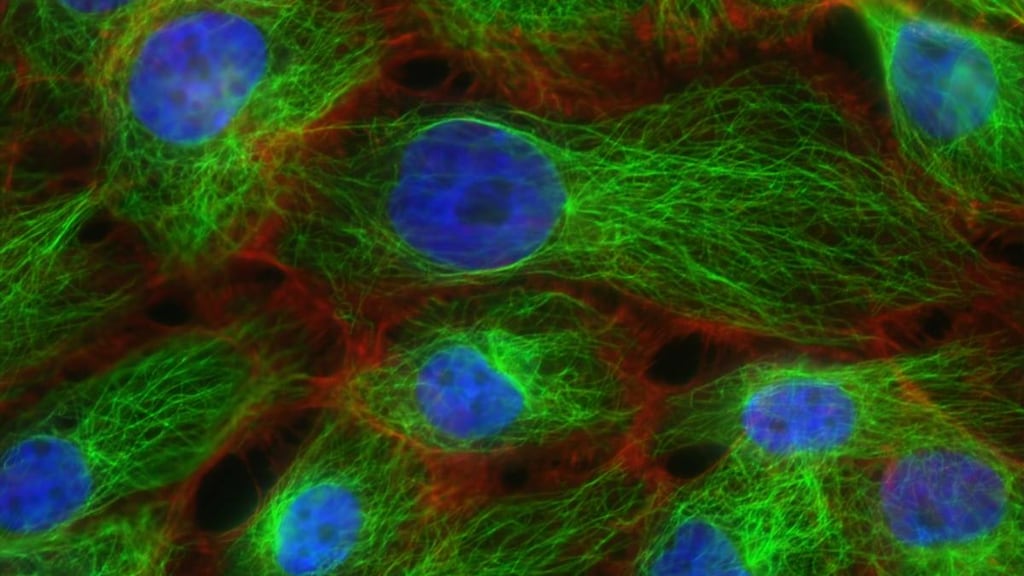Dosage Forms
Excipient information presented when available (limited, particularly for generics); consult specific product labeling.
Solution Reconstituted, Intramuscular:
Erwinaze: 10,000 units (1 ea)
Pharmacology
Mechanism of Action
Asparaginase catalyzes the deamidation of asparagine to aspartic acid and ammonia, reducing circulating levels of asparagine. Leukemia cells lack asparagine synthetase and are unable to synthesize asparagine. Asparaginase reduces the exogenous asparagine source for the leukemic cells, resulting in cytotoxicity specific to leukemic cells.
Pharmacokinetics/Pharmacodynamics
Half-Life Elimination
IM: ~16 hours (Asselin 1993; Avramis 2005); IV: ~7.5 hours
Use: Labeled Indications
Acute lymphoblastic leukemia: Treatment (in combination with other chemotherapy) of acute lymphoblastic leukemia (ALL) in patients with hypersensitivity to E. coli-derived asparaginase
Contraindications
History of serious hypersensitivity reactions, including anaphylaxis to asparaginase (Erwinia) or any component of the formulation; history of serious pancreatitis, serious thrombosis, or serious hemorrhagic events with prior asparaginase treatment
Canadian labeling: Additional contraindications (not in the US labeling): Women who are or may become pregnant
Dosage and Administration
Dosing: Adult
Note: If administering IV, consider monitoring nadir serum asparaginase activity (NSAA) levels; if desired levels are not achieved, change to IM administration.
Acute lymphoblastic leukemia (ALL): IM, IV:
As a substitute for pegaspargase: 25,000 units/m2 3 times weekly (Mon, Wed, Fri) for 6 doses for each planned pegaspargase dose
As a substitute for asparaginase (E. coli): 25,000 units/m2 for each scheduled asparaginase (E. coli) dose
Dosing: Pediatric
Note: If administering IV, consider monitoring nadir serum asparaginase activity (NSAA) levels; if desired levels are not achieved, change to IM administration.
Acute lymphoblastic leukemia (ALL): Children and Adolescents:
As a substitute for pegaspargase: IM, IV: 25,000 units/m2/dose 3 times weekly (Mon, Wed, Fri) for 6 doses for each planned pegaspargase dose
As a substitute for asparaginase (E. coli): IM, IV: 25,000 units/m2/dose for each scheduled asparaginase (E. coli) dose
Acute lymphoblastic leukemia (ALL) induction: Canadian labeling: Infants, Children, and Adolescents <14 years: IM: 6,000 units/m2 3 times weekly for 9 doses beginning day 4 of week 1 (in combination with allopurinol, vincristine, prednisone, methotrexate, and daunorubicin)
Dosage adjustment for toxicity:
Manufacturer's labeling: Children and Adolescents:
Hemorrhagic or thrombotic event: Discontinue treatment; may resume treatment upon symptom resolution.
Pancreatitis:
Mild pancreatitis: Withhold treatment until signs and symptoms subside and amylase returns to normal; may resume after resolution.
Severe or hemorrhagic pancreatitis (abdominal pain >72 hours and amylase ≥2 x ULN): Discontinue treatment; further use is contraindicated.
Serious hypersensitivity: Discontinue treatment.
The following adjustments have also been recommended for asparaginase products (Stock 2011): Older Adolescents:
Hyperammonemia-related fatigue: Continue therapy for grade 2 toxicity. If grade 3 toxicity occurs, reduce dose by 25%; resume full dose when toxicity ≤ grade 2 (make up for missed doses). If grade 4 toxicity occurs, reduce dose by 50%; resume full dose when toxicity ≤ grade 2 (make up for missed doses).
Hyperglycemia: Continue therapy for uncomplicated hyperglycemia. If hyperglycemia requires insulin therapy, hold asparaginase (and any concomitant corticosteroids) until blood glucose controlled; resume dosing at prior dose level. For life-threatening hyperglycemia or toxicity requiring urgent intervention, hold asparaginase (and corticosteroids) until blood glucose is controlled with insulin; resume asparaginase and do not make up for missed doses.
Hypersensitivity reactions: May continue dosing for urticaria without bronchospasm, hypotension, edema, or need for parenteral intervention. If wheezing or other symptomatic bronchospasm with or without urticaria, angioedema, hypotension, and/or life-threatening hypersensitivity reactions occur, discontinue asparaginase.
Hypertriglyceridemia: If serum triglyceride level <1,000 mg/dL, continue asparaginase but monitor closely for pancreatitis. If triglyceride level >1,000 mg/dL, hold asparaginase and monitor; resume therapy at prior dose level after triglyceride level returns to baseline.
Pancreatitis:
Asymptomatic amylase or lipase >3 times ULN (chemical pancreatitis) or radiologic abnormalities only: Continue asparaginase and monitor levels closely.
Symptomatic amylase or lipase >3 times ULN: Hold asparaginase until enzyme levels stabilize or are declining.
Symptomatic pancreatitis or clinical pancreatitis (abdominal pain with amylase or lipase >3 times ULN for >3 days and/or development of pancreatic pseudocyst): Permanently discontinue asparaginase.
Thrombosis and bleeding, CNS:
Thrombosis: Continue therapy for abnormal laboratory findings without a clinical correlate. If grade 3 toxicity occurs, discontinue therapy; if CNS signs/symptoms are fully resolved and further asparaginase doses are required, may resume therapy at a lower dose and/or longer intervals between doses. Discontinue therapy for grade 4 toxicity.
Hemorrhage: Discontinue therapy; do not withhold therapy for abnormal laboratory findings without a clinical correlate. If grade 3 toxicity occurs, discontinue therapy; if CNS signs/symptoms are fully resolved and further asparaginase doses are required, may resume therapy at a lower dose and/or longer intervals between doses. Discontinue therapy for grade 4 toxicity.
Thrombosis and bleeding, non-CNS:
Thrombosis: Continue therapy for abnormal laboratory findings without a clinical correlate. If grade 3 or 4 toxicity occurs, withhold therapy until acute toxicity and clinical signs resolve and anticoagulant therapy is stable or completed. Do not withhold therapy for abnormal laboratory findings without clinical correlate.
Hemorrhage: If grade 2 bleeding in conjunction with hypofibrinogenemia occurs, withhold therapy until bleeding ≤ grade 1. Do not withhold therapy for abnormal laboratory findings without clinical correlate. For grade 3 or 4 bleeding, withhold therapy until bleeding ≤ grade 1 and until acute toxicity and clinical signs resolve and coagulant replacement therapy is stable or completed.
Dosing: Adjustment for Toxicity
Hemorrhagic or thrombotic event: Discontinue treatment; may resume treatment upon symptom resolution.
Pancreatitis:
Mild pancreatitis: Withhold treatment until signs and symptoms subside and amylase levels return to normal; may resume after resolution.
Severe or hemorrhagic pancreatitis (abdominal pain >72 hours and amylase ≥2 x ULN): Discontinue treatment; further use is contraindicated.
Serious hypersensitivity reaction: Discontinue treatment.
The following adjustments have also been recommended for asparaginase products (Stock 2011):
Hyperammonemia-related fatigue: Continue therapy for grade 2 toxicity. If grade 3 toxicity occurs, reduce dose by 25%; resume full dose when toxicity ≤ grade 2 (make up for missed doses). If grade 4 toxicity occurs, reduce dose by 50%; resume full dose when toxicity ≤ grade 2 (make up for missed doses).
Hyperglycemia: Continue therapy for uncomplicated hyperglycemia. If hyperglycemia requires insulin therapy, hold asparaginase (and any concomitant corticosteroids) until blood glucose controlled; resume dosing at prior dose level. For life-threatening hyperglycemia or toxicity requiring urgent intervention, hold asparaginase (and corticosteroids) until blood glucose is controlled with insulin; resume asparaginase and do not make up for missed doses.
Hypersensitivity reactions: May continue dosing for urticaria without bronchospasm, hypotension, edema, or need for parenteral intervention. If wheezing or other symptomatic bronchospasm with or without urticaria, angioedema, hypotension, and/or life-threatening hypersensitivity reactions occur, discontinue asparaginase.
Hypertriglyceridemia: If serum triglyceride level <1000 mg/dL, continue asparaginase but monitor closely for pancreatitis. If triglyceride level >1,000 mg/dL, hold asparaginase and monitor; resume therapy at prior dose level after triglyceride level returns to baseline.
Pancreatitis:
Asymptomatic amylase or lipase >3 times ULN (chemical pancreatitis) or radiologic abnormalities only: Continue asparaginase and monitor levels closely.
Symptomatic amylase or lipase >3 times ULN: Hold asparaginase until enzyme levels stabilize or are declining.
Symptomatic pancreatitis or clinical pancreatitis (abdominal pain with amylase or lipase >3 times ULN for >3 days and/or development of pancreatic pseudocyst): Permanently discontinue asparaginase.
Thrombosis and bleeding, CNS:
Thrombosis: Continue therapy for abnormal laboratory findings without a clinical correlate. If grade 3 toxicity occurs, discontinue therapy; if CNS signs/symptoms are fully resolved and further asparaginase doses are required, may resume therapy at a lower dose and/or longer intervals between doses. Discontinue therapy for grade 4 toxicity.
Hemorrhage: Discontinue therapy; do not withhold therapy for abnormal laboratory findings without a clinical correlate. If grade 3 toxicity occurs, discontinue therapy; if CNS signs/symptoms are fully resolved and further asparaginase doses are required, may resume therapy at a lower dose and/or longer intervals between doses. Discontinue therapy for grade 4 toxicity.
Thrombosis and bleeding, non-CNS:
Thrombosis: Continue therapy for abnormal laboratory findings without a clinical correlate. If grade 3 or 4 toxicity occurs, withhold therapy until acute toxicity and clinical signs resolve and anticoagulant therapy is stable or completed. Do not withhold therapy for abnormal laboratory findings without clinical correlate.
Hemorrhage: If grade 2 bleeding in conjunction with hypofibrinogenemia occurs, withhold therapy until bleeding ≤ grade 1. Do not withhold therapy for abnormal laboratory findings without clinical correlate. For grade 3 or 4 bleeding, withhold therapy until bleeding ≤ grade 1 and until acute toxicity and clinical signs resolve and coagulant replacement therapy is stable or completed.
Reconstitution
Reconstitute each vial with 1 mL of preservative free sodium chloride 0.9% (NS) to obtain a concentration of 10,000 units/mL, or with 2 mL preservative free NS to obtain a concentration of 5,000 units/mL. Gently direct the NS down the wall of the vial (do not inject forcefully into or onto the powder). Dissolve by gently swirling or mixing; do not shake or invert the vial. Resulting reconstituted solution should be clear and colorless and free of visible particles or protein aggregates. Within 15 minutes of reconstitution, withdraw appropriate volume for dose into a polypropylene syringe. If administering intravenously, slowly inject the appropriate volume of reconstituted solution into a NS 100 mL infusion bag; do not shake or squeeze the bag. Administer within 4 hours of reconstitution.
Additional special preparation instructions may be required for select Asparaginase (Erwinia) batches. Asparaginase (Erwinia) vials from certain US batches should only be administered intramuscularly.
Refer to the following for batch-specific information:
Erwinaze [US product]: http://erwinazesupply.com/product-updates/
Erwinase [Canadian product]: http://healthycanadians.gc.ca/recall-alert-rappel-avis/hc-sc/2017/63916a-eng.php
Administration
Note: Vials from certain batches should only be administered intramuscularly or require the use of a 0.2 micron filter if administered intravenously. Refer to the following for batch-specific information: http://erwinazesupply.com/product-updates/.
IM: The volume of each single injection site should be limited to 2 mL; use multiple injections for volumes >2 mL.
IV: Infuse over 1 to 2 hours; do not infuse other medications through the same IV line.
Storage
Store intact vials refrigerated at 2°C to 8°C (36°F to 46°F). Protect from light. Within 15 minutes of reconstitution, withdraw appropriate volume for dose into a polypropylene syringe. Do not freeze or refrigerate reconstituted solution; discard if not administered within 4 hours.
Drug Interactions
DexAMETHasone (Systemic): Asparaginase (Erwinia) may increase the serum concentration of DexAMETHasone (Systemic). This is thought to be due to an asparaginase-related decrease in hepatic proteins responsible for dexamethasone metabolism. Monitor therapy
Adverse Reactions
Frequency of adverse reactions is for both IM and IV routes unless specified.
>10%: Hypersensitivity: Hypersensitivity reaction (14% [IV: ≤37%]; grades 3/4: 4%; includes anaphylaxis, urticaria)
1% to 10%:
Cardiovascular: Thrombosis (2% [IV: ≤7%]; grades 3/4: ≤1%; includes pulmonary embolism and cerebrovascular accident)
Endocrine & metabolic: Hyperglycemia (4% [IV: ≤17%]; grades 3/4: 4%), abnormal transaminase (4%), decreased glucose tolerance (4%)
Gastrointestinal: Nausea (3% [IV: ≤20%]), vomiting (3% [IV: ≤17%]), pancreatitis (4%; grades 3/4: <1%), abdominal pain (1%), diarrhea (1%), mucositis (1%)
Local: Injection site reaction (3%)
Miscellaneous: Fever (4%)
<1%, postmarketing, and/or case reports: Acute renal failure, anorexia, azotemia, bone marrow depression (rare), changes in serum lipids, chills, decreased serum albumin, decreased serum cholesterol, disseminated intravascular coagulation, headache, hemorrhage, hepatomegaly, hyperammonemia, hyperbilirubinemia, irritability, malabsorption syndrome, proteinuria, seizure, transient ischemic attacks, weight loss
Warnings/Precautions
Concerns related to adverse effects:
- GI toxicity: Antiemetics may be recommended to prevent nausea and vomiting; in pediatrics, IV doses ≥20,000 units/m2 are associated with a high emetic potential (Paw Cho Sing 2019).
- Glucose intolerance: In clinical trials, 5% of patients experienced glucose intolerance; may be irreversible. Monitor glucose levels (baseline and periodic) during treatment. May require insulin administration.
- Hypersensitivity reactions: Serious hypersensitivity reactions (grade 3 and 4), including anaphylaxis, have occurred in 5% of patients in clinical trials. Immediate treatment for hypersensitivity reactions should be available during treatment. Discontinue for serious hypersensitivity reactions (and administer appropriate treatment).
- Pancreatitis: Pancreatitis has been reported in 4% of patients in clinical trials. Promptly evaluate with symptoms suggestive of pancreatitis. For mild pancreatitis, withhold treatment until signs and symptoms subside and amylase levels return to normal; may resume after resolution. Discontinue for severe or hemorrhagic pancreatitis characterized by abdominal pain >72 hours and amylase ≥2 x ULN. Further use is contraindicated if severe pancreatitis is diagnosed.
- Thrombosis and hemorrhage: Serious thrombotic events, including sagittal sinus thrombosis and pulmonary embolism, have been reported with asparaginase formulations. Discontinue for thrombotic event, may resume treatment after resolution. Decreases in fibrinogen, protein C activity, protein S activity, and antithrombin III have been noted following a 2-week treatment course administered intramuscularly. Discontinue for hemorrhagic event; may resume treatment after resolution (contraindicated with history of serious thrombosis or hemorrhagic event with prior asparaginase treatment).
Other warnings/precautions:
- Medication error prevention: Do not interchange Erwinia asparaginase for E. coli asparaginase, calaspargase pegol, or pegaspargase; ensure the proper formulation, route of administration, and dose prior to administration.
Monitoring Parameters
CBC with differential, amylase, lipase, triglycerides, liver enzymes, blood glucose (baseline and periodically during treatment), coagulation parameters; for IV administration, consider monitoring nadir serum asparaginase activity levels. Monitor for symptoms of hypersensitivity, symptoms of pancreatitis, thrombosis, or hemorrhage. Evaluate pregnancy status prior to use in females of reproductive potential.
Pregnancy
Pregnancy Considerations
Based on data from animal reproduction studies, in utero exposure to asparaginase (Erwinia) may cause fetal harm.
Evaluate pregnancy status prior to use in females of reproductive potential. Females of reproductive potential should use effective contraception during therapy and for 3 months after the last dose of asparaginase (Erwinia); use of oral contraceptives is not recommended.
Patient Education
- Discuss specific use of drug and side effects with patient as it relates to treatment. (HCAHPS: During this hospital stay, were you given any medicine that you had not taken before? Before giving you any new medicine, how often did hospital staff tell you what the medicine was for? How often did hospital staff describe possible side effects in a way you could understand?)
- Patient may experience diarrhea, nausea, vomiting, injection site irritation, mouth sores, or abdominal pain. Have patient report immediately to prescriber signs of pancreatitis (severe abdominal pain, severe back pain, severe nausea, or vomiting), signs of high blood sugar (confusion, fatigue, increased thirst, increased hunger, passing a lot of urine, flushing, fast breathing, or breath that smells like fruit), signs of severe cerebrovascular disease (change in strength on one side is greater than the other, difficulty speaking or thinking, change in balance, or vision changes), signs of DVT (edema, warmth, numbness, change in color, or pain in the extremities), chest pain, coughing up blood, shortness of breath, severe headache, bruising, or bleeding (HCAHPS).
- Educate patient about signs of a significant reaction (eg, wheezing; chest tightness; fever; itching; bad cough; blue skin color; seizures; or swelling of face, lips, tongue or throat). Note: This is not a comprehensive list of all side effects. Patient should consult prescriber for additional questions.
Intended Use and Disclaimer: Should not be printed and given to patients. This information is intended to serve as a concise initial reference for healthcare professionals to use when discussing medications with a patient. You must ultimately rely on your own discretion, experience and judgment in diagnosing, treating and advising patients.




